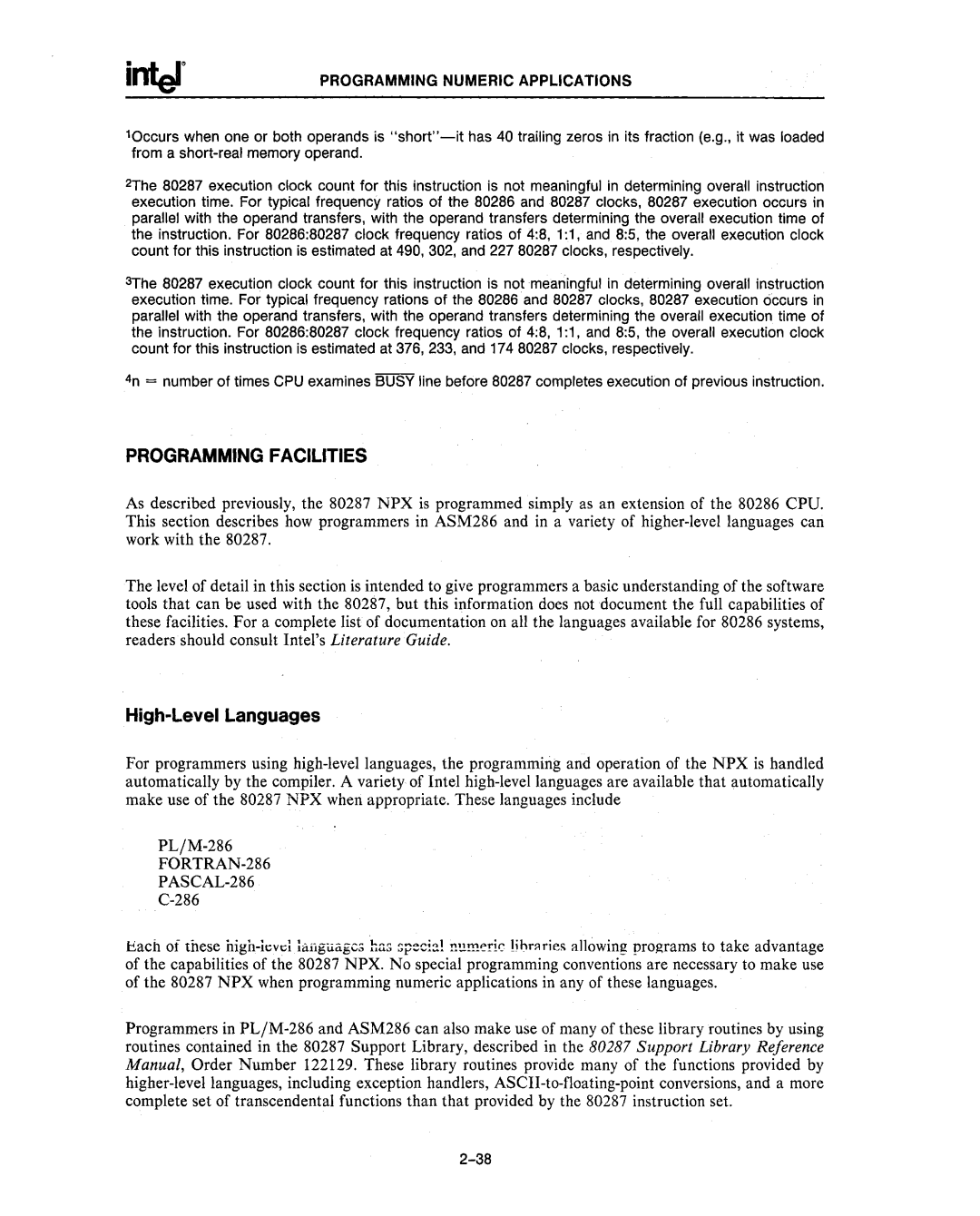
PROGRAMMING NUMERIC APPLICATIONS
10ccurs when one or both operands is
2The 80287 execution clock count for this instruction is not meaningful in determining overall instruction execution time. For typical frequency ratios of the 80286 and 80287 clocks, 80287 execution occurs in parallel with the operand transfers, with the operand transfers determining the overall execution time of the instruction. For 80286:80287 clock frequency ratios of 4:8,1:1, and 8:5, the overall execution clock count for this instruction is estimated at 490,302, and 22780287 clocks, respectively.
3The 80287 execution clock count for this instruction is not meaningful in determining overall instruction execution time. For typical frequency rations of the 80286 and 80287 clocks, 80287 execution Occurs in parallel with the operand transfers, with the operand transfers determining the overall execution time of the instruction. For 80286:80287 clock frequency ratios of 4:8, 1:1, and 8:5, the overall execution clock count for this instruction is estimated at 376,233, and 17480287 clocks, respectively.
4n = number of times CPU examines BUSY line before 80287 completes execution of previous instruction.
PROGRAMMING FACILITIES
As described previously, the 80287 NPX is programmed simply as an extension of the 80286 CPU. This section describes how programmers in ASM286 and in a variety of
The level of detail in this section is intended to give programmers a basic understanding of the software tools that can be used with the 80287, but this information does not document the full capabilities of these facilities. For a complete list of documentation on all the languages available for 80286 systems, readers should consult Intel's Literature Guide.
High-Level Languages
For programmers using
FORTRAN-286
PASCAL-286
hach of
Programmers in
